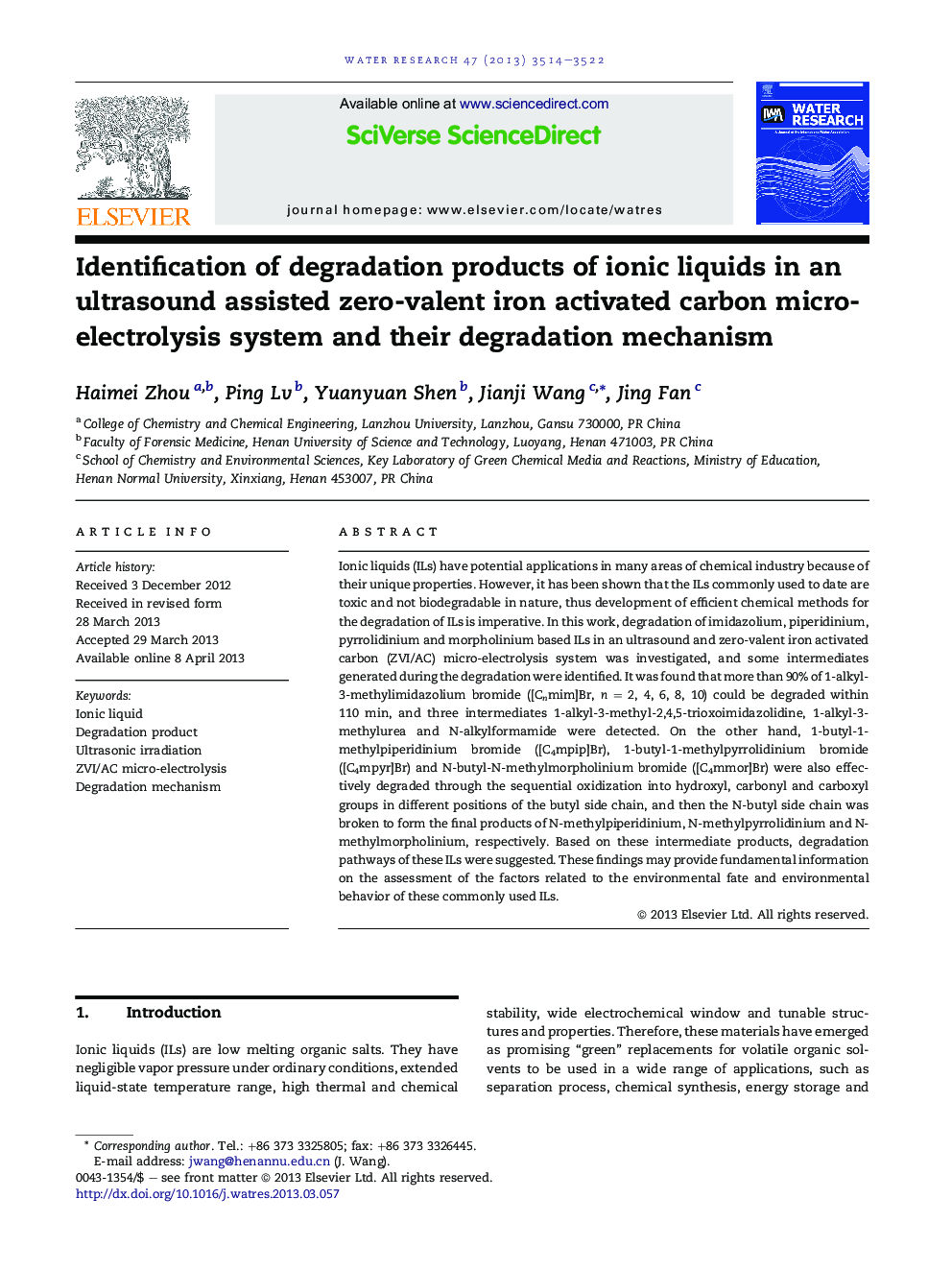| کد مقاله | کد نشریه | سال انتشار | مقاله انگلیسی | نسخه تمام متن |
|---|---|---|---|---|
| 4481815 | 1316834 | 2013 | 9 صفحه PDF | دانلود رایگان |

• Degradation of eight different ionic liquids (ILs) was studied.
• The intermediate products were identified and the degradation pathways were suggested.
• Imidazole ring of the imidazolium ILs was opened to form N-alkylformamide during the degradation.
• The degradation of piperidinium, pyrrolidinium and morpholinium ILs occurred on the side chain.
Ionic liquids (ILs) have potential applications in many areas of chemical industry because of their unique properties. However, it has been shown that the ILs commonly used to date are toxic and not biodegradable in nature, thus development of efficient chemical methods for the degradation of ILs is imperative. In this work, degradation of imidazolium, piperidinium, pyrrolidinium and morpholinium based ILs in an ultrasound and zero-valent iron activated carbon (ZVI/AC) micro-electrolysis system was investigated, and some intermediates generated during the degradation were identified. It was found that more than 90% of 1-alkyl-3-methylimidazolium bromide ([Cnmim]Br, n = 2, 4, 6, 8, 10) could be degraded within 110 min, and three intermediates 1-alkyl-3-methyl-2,4,5-trioxoimidazolidine, 1-alkyl-3-methylurea and N-alkylformamide were detected. On the other hand, 1-butyl-1-methylpiperidinium bromide ([C4mpip]Br), 1-butyl-1-methylpyrrolidinium bromide ([C4mpyr]Br) and N-butyl-N-methylmorpholinium bromide ([C4mmor]Br) were also effectively degraded through the sequential oxidization into hydroxyl, carbonyl and carboxyl groups in different positions of the butyl side chain, and then the N-butyl side chain was broken to form the final products of N-methylpiperidinium, N-methylpyrrolidinium and N-methylmorpholinium, respectively. Based on these intermediate products, degradation pathways of these ILs were suggested. These findings may provide fundamental information on the assessment of the factors related to the environmental fate and environmental behavior of these commonly used ILs.
Figure optionsDownload high-quality image (157 K)Download as PowerPoint slide
Journal: Water Research - Volume 47, Issue 10, 15 June 2013, Pages 3514–3522